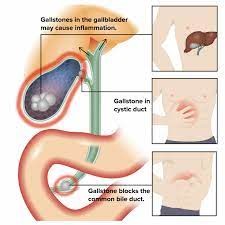Introduction to Cholecystitis
- Cholecystitis is the inflammation of the gallbladder, a small pear-shaped organ that stores and secretes bile into the duodenum to aid in the digestion of fats.
- Bile is a fluid produced by the liver that contains bile salts, acids, cholesterol, phospholipids, proteins, bilirubin, and other compounds.
- Cholecystitis can be acute or chronic, depending on the duration and severity of the inflammation.
- It is usually caused by biliary stasis, either due to gallstones obstructing the cystic duct (calculous cholecystitis) or impaired gallbladder emptying in the absence of gallstones (acalculous cholecystitis).
- The clinical manifestations of cholecystitis primarily involve abdominal pain in the right upper quadrant, often accompanied by nausea, vomiting, fever, and other related symptoms.

Nursing Test Bank
Naxlex Comprehensive Predictor Exams
Questions on Introduction to Cholecystitis
Correct Answer is C
Explanation
Correct Answer is A
Explanation
Correct Answer is C
Explanation
Correct Answer is D
Explanation
Correct Answer is C
Explanation
Correct Answer is A
Explanation
Correct Answer is C
Explanation
Correct Answer is B
Explanation
Correct Answer is C
Explanation
Correct Answer is D
Explanation
Correct Answer is C
Explanation
Correct Answer is C
Explanation
Correct Answer is C
Explanation
Correct Answer is C
Explanation
Correct Answer is C
Explanation
Correct Answer is C
Explanation
Correct Answer is B
Explanation
Search Here
Related Topics
More on Nursing
Free Nursing Study Materials
Access to all study guides and practice questions for nursing for free.
- Free Nursing Study Trials
- Free Nursing Video tutorials
- Free Nursing Practice Tests
- Free Exam and Study Modes
- Free Nursing Revision Quizlets
